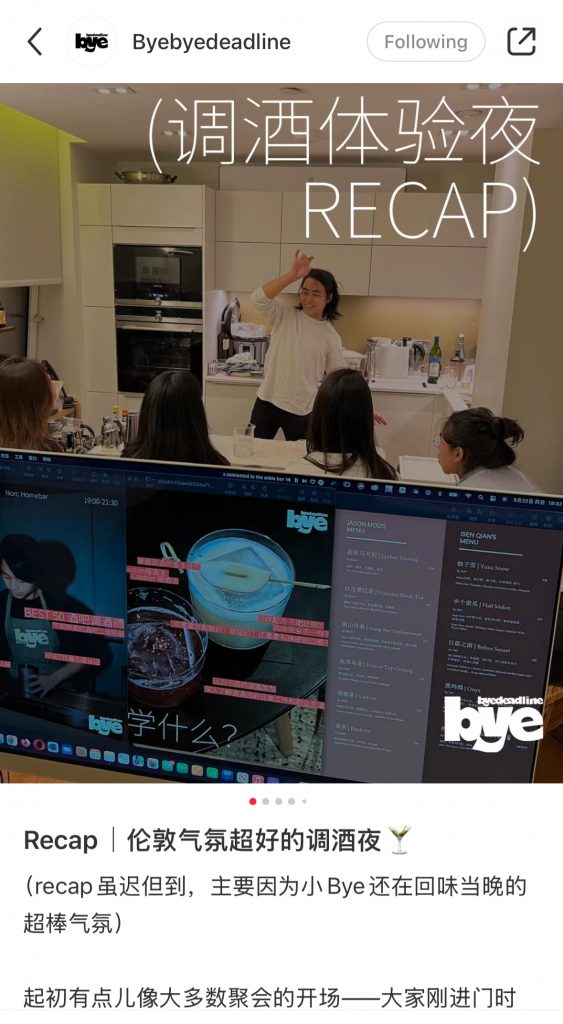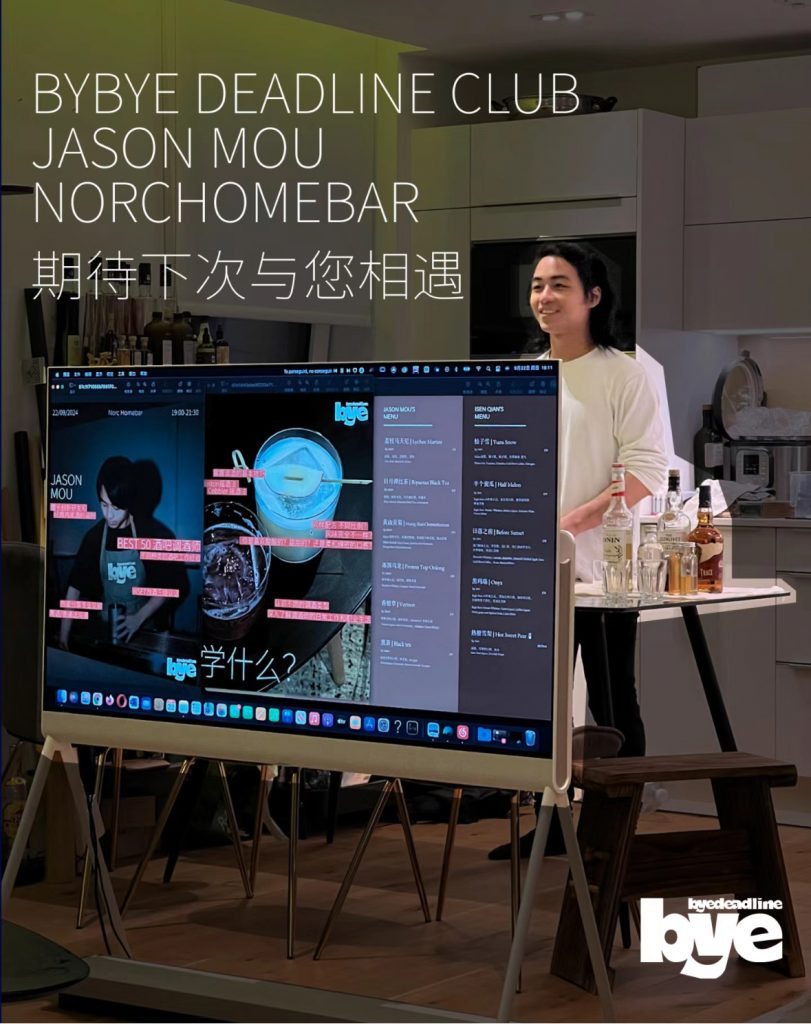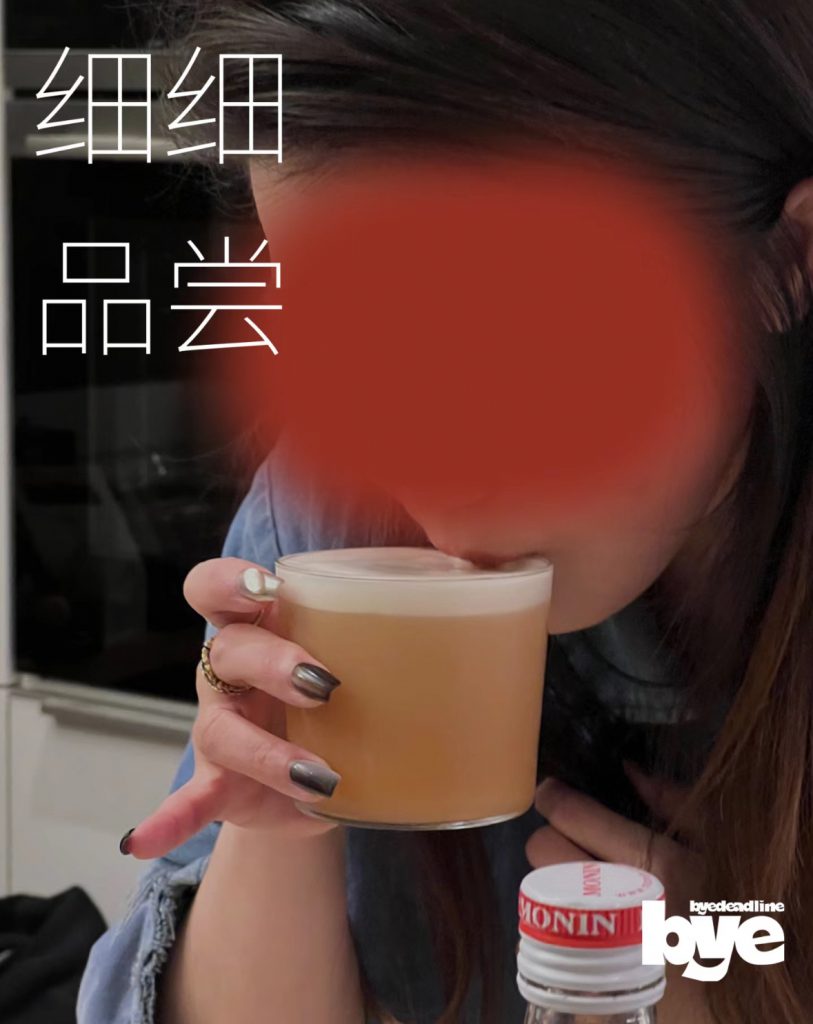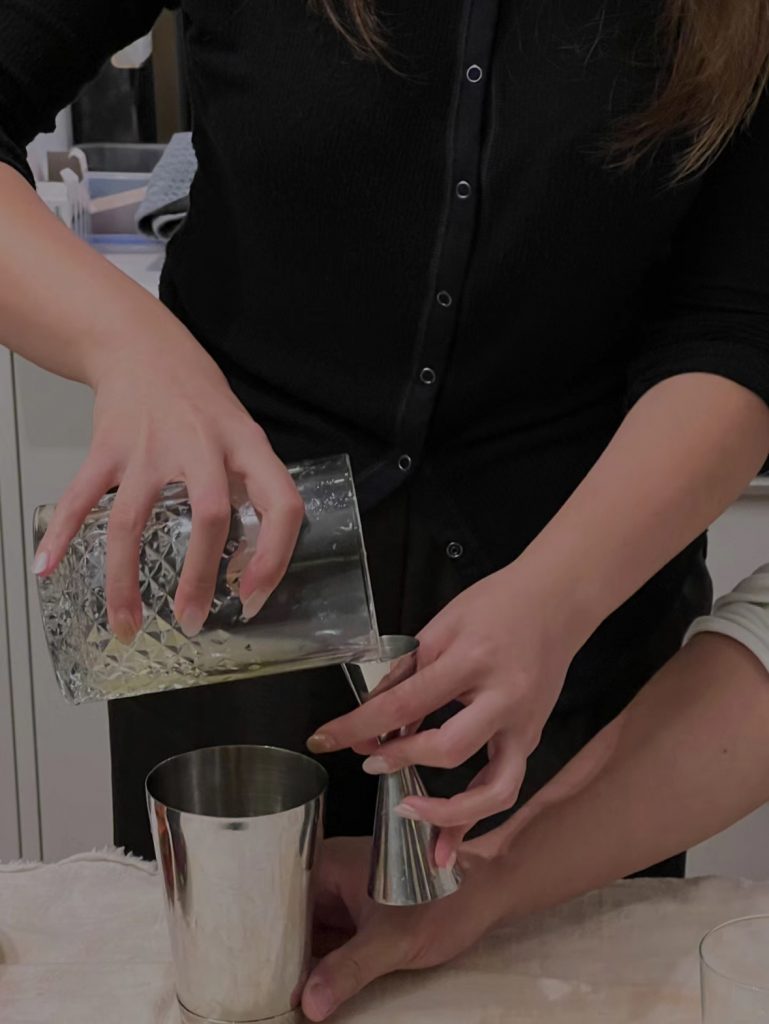Before the official intervention, I conducted a small-scale test. I found a social club called byebyedeadline on social media, which aims to help university students meet and connect. This club hosts different social activities every week. I decided to contact them to ask if I could run my pilot test during their Friday cocktail event. After getting permission from byebyedeadline club, bartender Jason Mou, the host Norc Home Bar, and the event participants, I carried out this small-scale test on Friday (18th October).
1. Opening Introduction and Icebreaker Activity
- Introduction: I started with a brief self-introduction to guide the participants into conversation, asking them to share their backgrounds, especially their connections to food, culture, and city life. This included asking where they were from and what food they missed most from home.
- Icebreaker: I asked Jason Mou to create a cocktail based on each participant’s hometown or a story they shared. This not only helped participants recall memories of home but also quickly broke the ice and helped them feel more comfortable with each other.
- Discussion Questions: While the cocktails were being prepared, I asked the participants open-ended questions to encourage them to share their cultural background and food habits from home. The discussion was centred around questions like:
- “What does this drink remind you of?”
- “Does it resemble any food or drink from your hometown?”
- “How have you adapted to the local food culture in this new city?”
2. Cocktail Interaction
- Participatory Cocktail Making: I invited participants to work with the bartender to create a cocktail that represents the flavours of their hometown. This process allowed participants to share memories of their home through sensory experiences like taste, smell, and sight. Throughout, I encouraged them to discuss questions like: “Why did you choose these ingredients? What part of your hometown do they represent?” and “How would you adjust these ingredients to suit the local tastes?”
- Comparison and Sharing: After making the cocktails, I encouraged each participant to introduce their creation and share any challenges or inspirations they encountered during the process. This sparked more cultural comparison and interaction.
3. Tasting and Discussion
- Incorporating the earlier mentioned theories of psychogeography and cognitive geography, I encouraged participants to reflect on the relationship between their food experiences and their perception of space in the new city. Through the cocktail-making activity, we discussed how they find connections to their hometown culture in the new city:
- “In this city, what place feels the closest to your hometown? Why?”
- “How do you use food experiences to understand this new urban environment?”
- At the same time, I invited participants to discuss their cultural adaptation process in the new environment, especially how food or drinks helped them adapt to the local culture.
- “In this city, what food do you think best represents the local culture?”
- “Do you think the experience of tasting local food helps you adapt to the new culture?”




